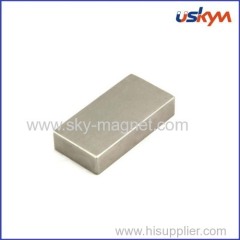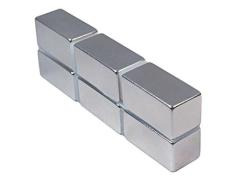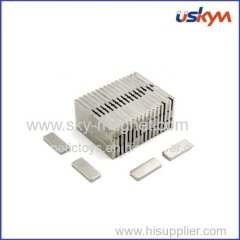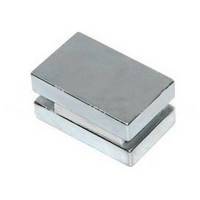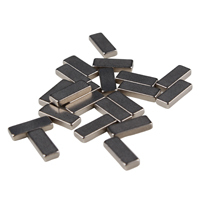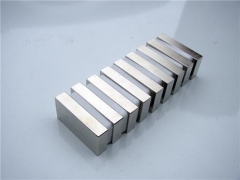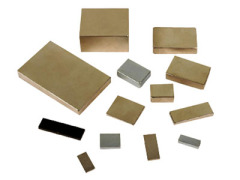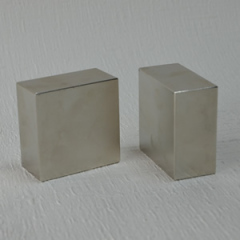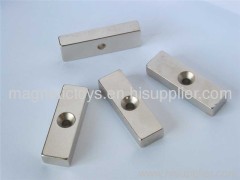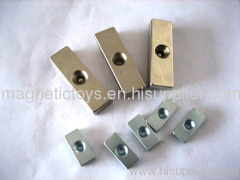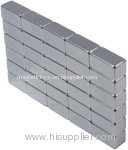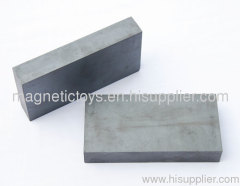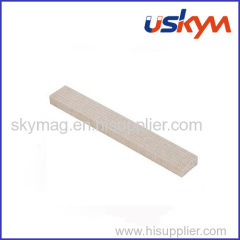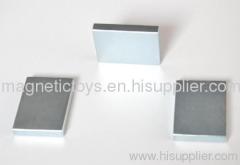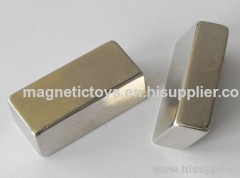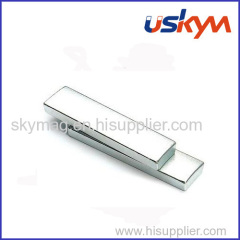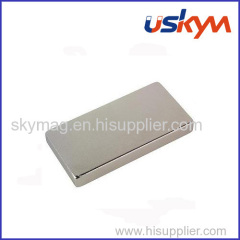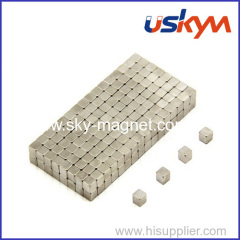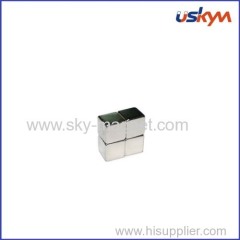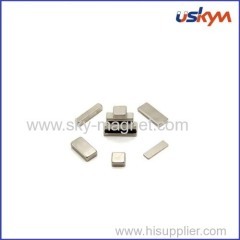
|
Sky Magnetech (Ningbo) Co., Ltd.
|
Neodymium Magnets Block
| Price: | 0.1~100.0 USD |
| Payment Terms: | T/T,L/C |
| Place of Origin: | Zhejiang, China (Mainland) |
|
|
|
| Add to My Favorites | |
| HiSupplier Escrow |
Product Detail
Neodymium block magnets (Nd-Fe-B) are composed of neodymium, iron, boron and a few transition metals.
Neodymium Block Magnets:
Neodymium block magnets (Nd-Fe-B) are composed of neodymium, iron, boron and a few transition metals. These magnets are extremely strong for their small size, metallic in appearance and found in simple shapes such as rings, blocks and discs.
Attributes of Neodymium Magnets:
1. Very high resistance to demagnetization
2. High energy for size
3. Good in ambient temperature
4. Moderately priced
5. Material is corrosive and should be coated for long term maximum energy output
6. Low working temperature for heat applications, but higher levels of heat resistance materials are being introduced periodically.
Applications of Neodymium Magnets:
Magnetic separators, linear actuators, microphone assemblies, servo motors, DC motors (automotive starters), computer rigid disc drives, printers and speakers.
Tolerances
For as pressed material, tolerance on the thickness (direction of magnetization) is ± . 005. Other dimensions are ± 2.5% or ± . 010, whichever is greater. According to IMA standards, visual imperfections such as hairline cracks, porosity and minor chips are commonly found in sintered metallic magnets. A chipped edge is considered acceptable if no more than 10% of the surface is missing. Cracks are acceptable as long as they do not extend across more than 50% of pole surface.
Magnetizing and Handling
Neodymium magnets are very brittle and very strong magnetically. Therefore, it is crucial to handle these magnets with extreme care to avoid personal injury and damage to the magnets. Fingers can be severely pinched between attracting magnets. Magnets can chip if allowed to "jump at" an attracting object. It is highly recommended that when constructing rare earth magnetic assemblies, they be magnetized after assembly.
Machining
Since block magnet material is prone to chipping and cracking, it does not lend itself to conventional machining methods. It can, however, be abrasively ground, but only with the use of liberal amounts of coolant. The coolant minimizes heat fracturing and the risk of fires caused by oxidized grinding dust.

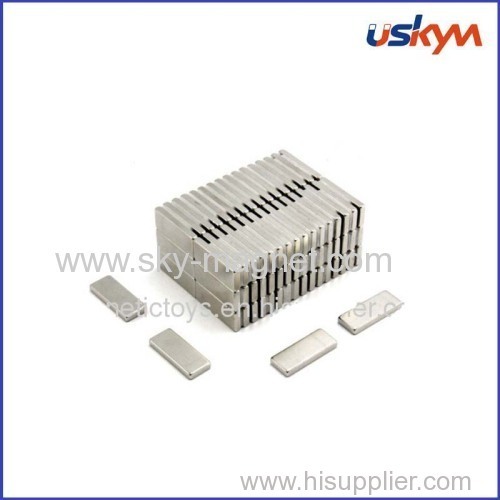


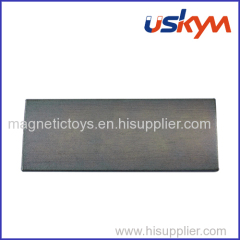
.jpg)
.jpg)
